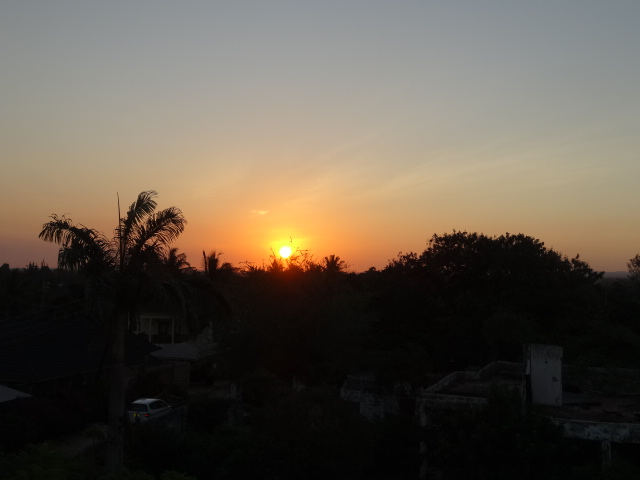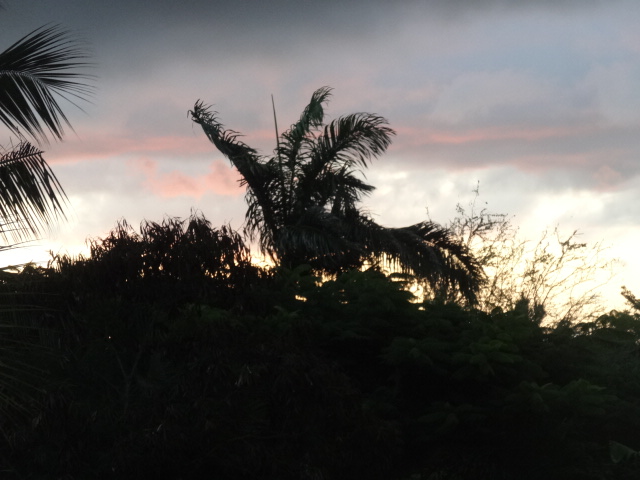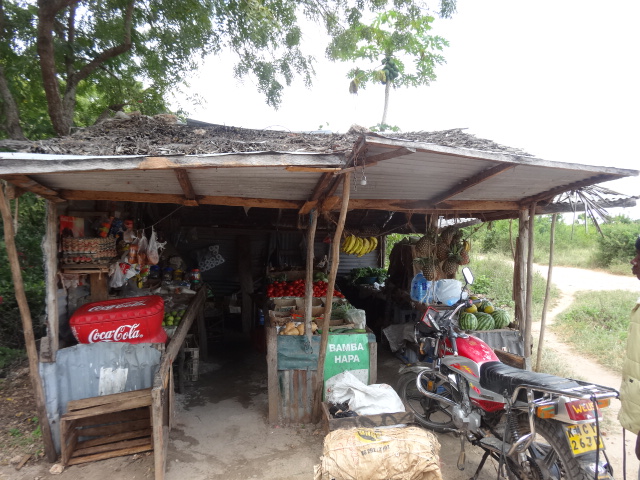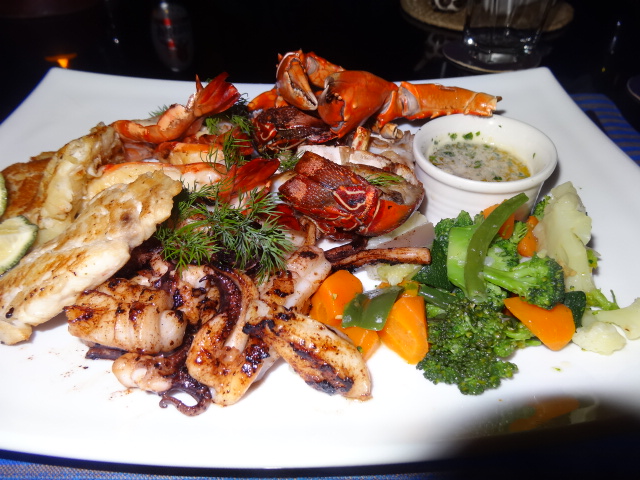 |
| Last night as we greeted Jeri and Hans in the yard, Tom took this shot. |
Today’s photos are from the post on this date in 2013, while we were living on the island of Diani Beach, Kenya. For more on this date, please click here.
Yesterday, after preparing and uploading the daily post, I spent the entire afternoon, writing, and editing the first of five special 2000 word posts required for our web developers to set up with keywords to increase our web traffic. Doing so will increase our position in Google and other search engines for us to be found more readily by the user searching using specific keywords.
 |
| Only moments later he took this shot, but oddly, the sky appeared brighter. |
Since our site’s main focus hasn’t been to generate income in the past, we never went through this procedure in the past. Generally, this is a very expensive process since the site must be observed by the developers on a regular basis. Based on the wonderful relationship we’ve built with Kate, we have been able to secure a reasonable cost of this ongoing process. She can be reached at the following:
 |
| A baboon shot on our return cab ride from the grocery store. They approach the car when we stop, curious to see what food we may have for them. We had none but a lot of tourists buy bananas to give to them. |
 |
| Our glass table was set and ready for our dinner guests, the landlord, and his wife. With no Windex or glass cleaner in the grocery stores, I’ve had a heck of a time cleaning the glass table top. I asked Hesborn how he is able to clean it so well with no streaks. He said he uses soap and water on a rag, drying it with a dry towel. I tried this method, only to end up with streaks. |
 |
| This is Jessie, who disappeared for 24 hours to later be returned by a kind local man after he’d heard that a small long-haired dog was on the loose. She and I became very close during the three months. She wasn’t allowed indoors but she waited outside our front door all night, excited to see me in the morning. |
 |
| Jeri and Hans, our landlords, neighbors, and new friends joined us for dinner. |
Subsequently, we are both holding our own, staying upbeat, and hopeful for the future. News coming out of South Africa states (true or not) they are opening their borders soon, but are restricting travelers from certain countries from entering.
This could easily exclude India and the US. Both have to be allowable for us to be allowed to enter. The wait continues.
____________________________________________
Photo from one year ago today, September 18, 2019:
 |
| An adorable pygora goat on the farm in St. Teath, Cornwall, England, posing for a photo atop the picnic table. “The pygora goat is a cross between the pygmy goat and the angora goat that produces three distinct kinds of fleece and has the smaller size of the pygmy.” For more photos, please click here. |






















































































